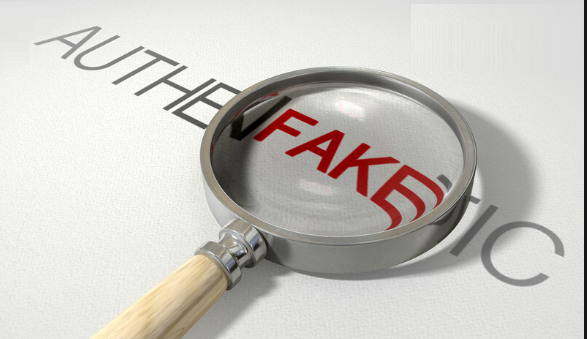Operation & cleaning of Non-viable Particle counter
PURPOSE
To lay down the procedure for operation & cleaning of non-viable particle counter.
SCOPE
This procedure is applicable for operation & cleaning of non-viable particle counter for SVP.
REFERENCE(S) & ATTACHMENTS
References
WHO-TRS 961 guideline
DIN EN ISO 14644-1 guidelines
Attachments
Attachment I : Instrument (Air born particle counter) Usage Log Book
RESPONSIBILITY
Production Person
Production officer/chemist/executive shall be responsible for carrying out the operation. usage & storage of the air born particle counter.
Responsible to take corrective action if any deviation performed during operation.
Production Head
To ensure the compliance of SOP.
Quality Assurance Persons
To verify that all the instructions are followed properly as per the given SOP.
To ensure implement of the SOP.
DISTRIBUTION
Production
Quality Assurance
DEFINITION & ABBREVIATION(S)
Definition:
Particle Counter: A particle counter is instrument that detect & count physical particles. The nature of particle counting is based upon either light scattering, light obscuration or direct imaging. A high intensity light source is used to illuminate the particles as it pass through the detection chamber. Recorded video analyzed by computer software to measure the particle attributes.
Abbreviations
C.C. No.: Change Control Number
SS : Stainless Steel
IPA : Iso Propyl Alcohol
µ : Micron
WFI : Water For injection
PROCEDURE
Equipment description:
NVPC of met-one 3400 series is made up of SS body & operated by TFT colour touch screen located on the front panel of the unit. On the TFT screen GUI (graphic user
interface) to access the operation of the equipment. It has capability to connect probes, USB, external power cord. It has provided two battery port for charging the equipment &
give battery backup for other location operation.
Battery status is indicated by the state of the LED on the front of the unit, as table below.
It has an integrated printer located on the front of the unit next to the touch screen for easy printing of reports and records.
Operation :
Charge the machine with charging cord before taking machine to sampling location.
Bring the particle counter to the sampling location.
Remove the protective cap & connect the sampling port to the instrument.
Turn “ON” the particle counter.
After a splash screen, below main screen will appear on display.
Access the instrument by touching “LOCK” icon on the navigation screen.
A login screen appears. Enter the “User Name” & “Password” & press “Enter” to access the displayed icons.
Access the sample screen from the main menu by pressing “SAMPLE” icon, following indicators will display.
Real-time particle count information for each size range.
Number of samples left to take in succession (if set for multiple samples)
Environmental probe readings if probes are connected.
Temperature
Air velocity
Relative humidity
Count status (Start, Run, Hold, Stop)
Flow rate through the sensor
Volume sampled
Location name and number
Number of records in the buffer
Date
Time of day
Battery charge indicator
User messages
Enter the “sample location tab” & add the sample location to be sampled.
Go to the “SETTING” tab on navigation screen & enter the sampling time.
Sampling location can be add, edit or delete from the sampling location tab as shown in below figure.
Select the sample location tab & select the ADD icon.
Enter the location & press “ENTER & mention the location ID & press “ ENTER”.
To start the sampling in the specified location, go to the main navigation screen, touch the SETTING icon to access the sample setup screen.
From the general tab, touch the run mode field to access a dropdown menu.
Drop down menu has both AUTO & MANUAL mode function to start the sampling.
Touch the screen to desired mode either auto or manual.
To set the timing of sampling, go to the timing tab & mention the sample time as per below picture.
Start the cycle by pressing RUN icon & particle count will start.
The RUN icon become the STOP icon until particle count cycle complete.
The display indicate the count on the screen & buffer data will be display as per following pattern.
The count cycle will stop automatically & buffer data will be record & save in machine.
To print the data particle counter include a in-built printer & all print function will be available in printer icon.
Get the print of data by touching printer icon on main navigation screen.
Press the icon of the report to print as per following parameters.
ISO 146444-1
FS 209E
BS 5295
The report print example is as follows.
ISO 14644-1 STATICS
AVERAGE PARICLES/CU M
S/N ##########
LOCATION###
DATE YYYY-MM-DD TIME HH:MM:SS
CYCLES ### FLOWRATE ### LPM
VOLUME ##CU FT PERIOD HH:MM:SS
COUNT SCALE: PARTICLES
TEMPERATURE####. #F RH ###. #%
AIR VELOCITY #. # FT/ MIN
SIZE CUMULATIVE DIFFERENTIAL
0.3µm 12345678.9 12345678.9
0.5µm 12345678.9 12345678.9
1.0µm 12345678.9 12345678.9
Cleaning :
Switch off the instrument before cleaning & cap the air intake tube.
Outer body of the instrument is cleaned with soft cloth dipped in colin solution/ IPA solution.
Clean the screen with dry lint free cloth or moistened with IPA solution if any sticky material on the screen.
Don’t spray directly on the screen in any way, it can damage to the electronics part of the instrument.
Calibration:
The particle counter is send to external agency for calibration.
Frequency of calibration is on yearly basis ± 1 month.
